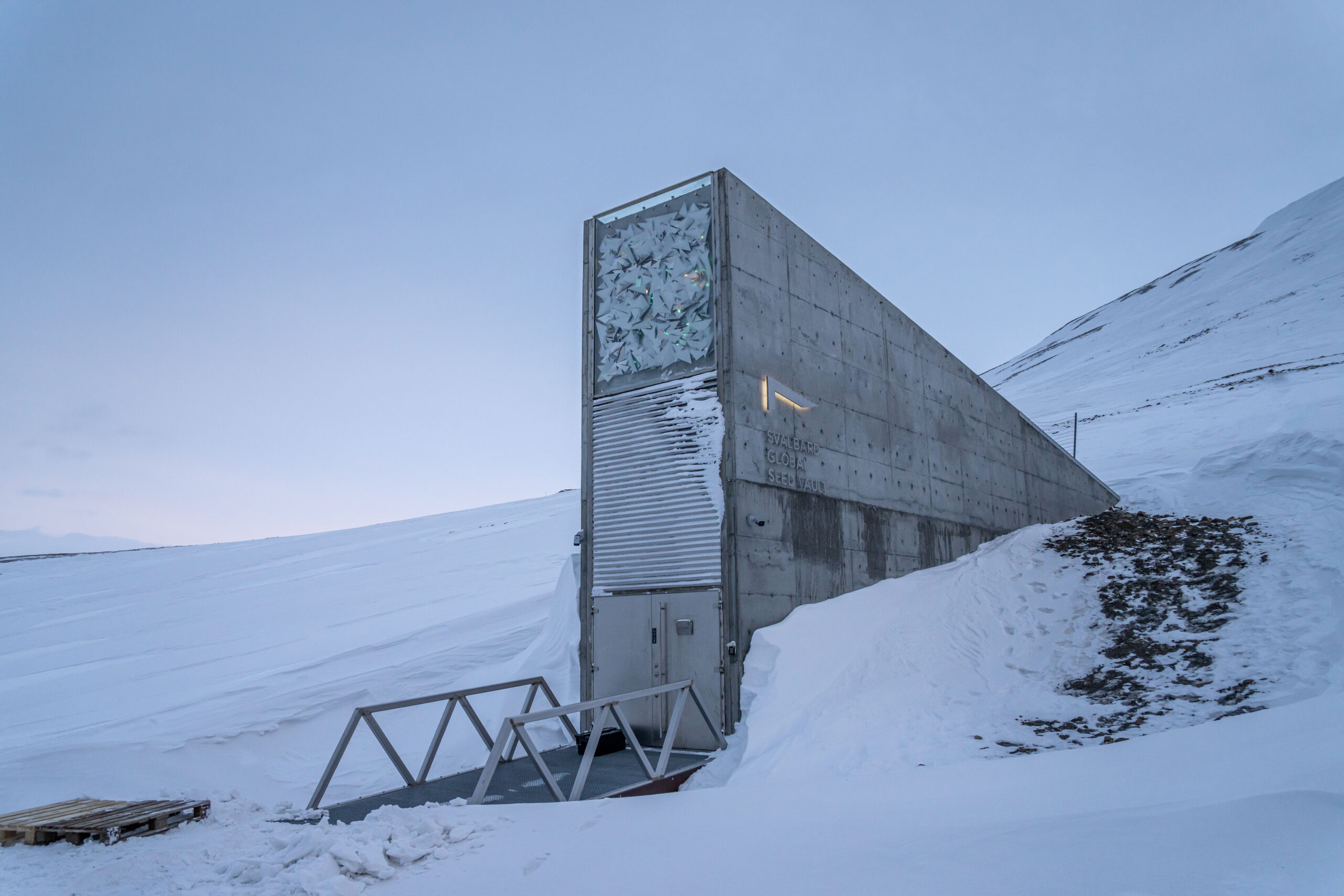
For the General Public
A virtual visit
Although only authorized personnel have access to the seed vault, you are all welcome to a virtual tour of the facility. Through this virtual tour you can enter the Seed Vault and see what it looks like inside the most important room in the world. Don’t forget to turn around or look up at the ceiling or down at the floor. And best of all – you don’t have to freeze in -18 C degrees!
What are seeds used for?
Farmers need seeds to plant. Most farmers are looking for seed types that produces plants adapted to the current growing conditions, such as soils and climate. Such plants should also withstand pests and diseases and produce a high yield of good quality.
In the films below you may visit entities that uses seeds types that are safeguarded in the Seed Vault.
How crop diversity is part of our culture
Man and nature have lived together for thousands of years. Many cultural traditions and local foods are closely interwoven with the plants that they planted.
- Masseria in Italy Lemons
- Masseria in Italy Olvei trees
- Masseria in Italy – wheat farming.
Why we need seed diversity
Seed diversity increases agriculture’s ability to adapt crop production to the climate, local growing conditions and consumers’ eating habits. Without access to crop diversity, future generations will not have the ability to adapt their agriculture to their needs. In most countries, seed diversity has been irretrievably lost. This means farmers have less crop diversity to choose from. The Earth is losing plant genetic diversity at an unprecedented rate, which poses an enormous risk for the entire global food production system.
Throughout history, humans have eaten some 50,000 different food plants. Yet today, only 15 food plants account for 90% of human consumption. Farmers in India once grew more than 110,000 varieties of rice. Today they grow only a few thousand. A Peruvian potato farmer grow more than 200 varieties of potatoes, most of which are for local consumption or regional markets. Wheat, rice and maize alone account for 2/3 of humanity`s food consumption. Looking to future changes in climate, pests and diseases, it becomes important to safeguard and conserve as many types of seeds as possible.
As for diversity, the Seed Vault now safeguards seeds of more than 250,000 types of wheat, 160,000 types of rice and 46,000 types of maize. Losing seed diversity means we also risk losing diversity in taste and nutrition, and their roles in traditional cuisines and cultures. Imagine a world with only one variety of green, one red and one yellow apple. Then imagine only having the option to choose between one white and one red wine. Is that how we want it?
Global citizens
The Seed Vault often receives offers for seed donations and also offers of voluntary seed collecting and for voluntary work in different supporting projects. Yes, individuals can help. The Seed Vault is a facility for storing copies of seeds conserved long term in gene bank collections only.
Contributions welcomed
However, individuals, associations and other plant enthusiasts can contribute to the cause of conserving crop diversity through active use of diverse seeds, through seed-saving associations, by cooperating with national gene banks and research institutes, and by reminding their politicians of the importance of conserving genetic diversity.
The rich genetic diversity of crops present in agriculture and in gene bank collections is to the credit of farmers, hobby growers and plant enthusiasts who, for millennia, have taken care of and multiplied seeds of cultivated plants all over the world. This fact is acknowledged in the International Treaty for Plant Genetic Resources for Food and Agriculture and other regional and global documents.
Material still to be conserved
Although seed collections in gene banks around the world conserve millions of plant genotypes, scientists and gene bank managers are well aware that a lot of unique and valuable plant material is still not conserved. Such valuable plants could be crop land races still in use among farmers, it could be plant varieties in use among amateurs and hobby growers, and it could be wild plant species related to crops and therefore valuable for future plant breeding.
Seed donations
National, regional and international gene banks, and breeding and research institutes and associations are working on conservation and use of genetic diversity of crop plants. Quite often, the Svalbard Global Seed Vault receives offers of seed donations. As the Seed Vault only conserves duplicates seeds from gene bank collections, any volunteer offers from individuals who have valuable seeds and plant varieties are encouraged to offer their material to the nearest gene bank, which presumably will have facilities for taking care of the seeds for long-term storing.
Once the seeds are conserved in a primary seed collection, the gene bank or institute can take advantage of space for security copies in the Seed Vault. In this way, valuable seeds from individuals can, in the end, become a part of the global back-up seed collection in the Seed Vault.
Volunteers
The Seed Vault appreciates, but unfortunately cannot accept offers for voluntary work, which are received quite often. The Seed Vault does not have a staff. It only requires personnel on the pre-arranged dates that the Vault is opened to receive seed deposits. Also, unlike other gene banks, there are no labs, no seed multiplication or investigation activities, and no distribution of seeds. Consequently, there are no positions available for volunteer workers.
